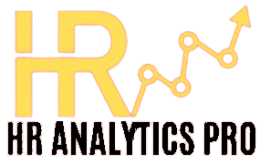Enhancing Learning and Development with AI in Workplaces
January 15, 2024 2024-03-01 14:31Enhancing Learning and Development with AI in Workplaces
Enhancing Learning and Development with AI in Workplaces
Introduction
The contemporary work environment boasts a diverse mix of employment types, generations, and geographical backgrounds, further enriched by the advent of robotics. This complex ecosystem presents unique challenges for Learning and Development (L&D) professionals, primarily in optimizing human resource potential within organizations.
This blog explores four innovative ways to enhance L&D using artificial intelligence (AI), drawing on insights from online research and expert webinars.
1. Develop and Deliver Better Content for Learning and Development
Historically, L&D involved multiple activities like research, transcription, course creation, and translation, each demanding unique skills and incurring significant costs. AI has revolutionized this landscape, automating many tasks and significantly easing the burden on educators. AI enables rapid generation of text, visuals, and multimedia content, streamlining content curation from various sources to improve training quality organization-wide.
2. Deliver Personalized Training
With diverse training needs across employee groups, traditional physical training methods face limitations in scalability and customization. AI empowers L&D teams to tailor training programs, utilizing chatbots, virtual coaches, and immersive technologies like augmented and virtual reality. These tools offer engaging, personalized learning experiences, accommodating individual preferences and learning capacities.
3. Perform More Accurate Assessments
Accurate assessment of learner proficiency requires deep analysis of knowledge, skills, and intelligence levels. Manual assessments often fall short in accuracy, speed, and consistency. Contemporary Learning Management Systems (LMS) and Performance Management Systems (PMS) leverage AI for precise performance evaluation, combining technology and human insight to cater to varying learner competencies.
4. Make Data-driven Decisions
Determining the success of L&D initiatives is challenging. AI, machine learning, and neuro-linguistic programming (NLP) facilitate continuous data collection and analysis, enabling intuitive reporting and insights. L&D teams can use this data to refine programs, predict trends, make informed decisions, and assess the return on investment, thereby enhancing learning experiences and aligning with organizational goals.
Concluding for Learning and Development with AI in Workplaces
Aligning individual goals with organizational objectives is pivotal in L&D. Leveraging AI, organizations can empower L&D teams to create personalized learning experiences, identify skill gaps, and foster continuous improvement. Key metrics like training time, cost, productivity, and revenue impact are essential in evaluating L&D progress. Ultimately, the effective use of AI in L&D not only improves ROI but also visibly impacts business outcomes.






